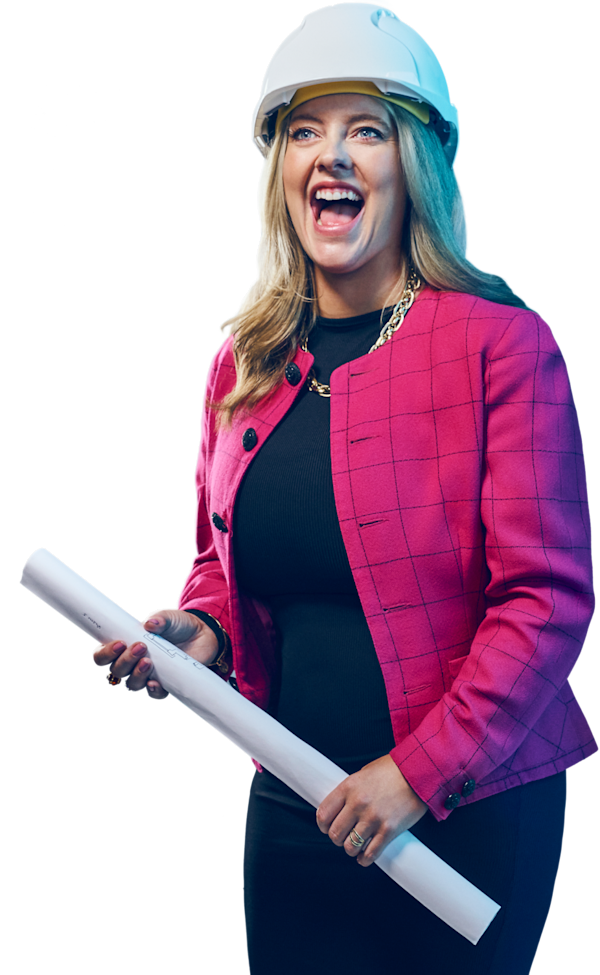
Asset finance
Spread the cost of business equipment, vehicles, or machinery with flexible asset finance. Compare options from 120+ UK lenders with Funding Options by Tide.
Trusted by over 21,000 customers
What is asset finance?
Purchase or lease
Asset finance enables you to purchase or lease an item, including leasing a new company car, expanding your service offerings, or replacing broken equipment
Pay in instalments
You can then pay for it in instalments over a set period of time
Less upfront investment
Asset finance enables you to gain access to items without requiring a large upfront investment or putting unnecessary strain on cash flow
What can you purchase with asset finance?
Vehicles
Cars, trucks, motorbikes, even planes and boats can all be bought or leased with the help of asset finance.
Technology
Have you been gazing longingly at that new piece of software everyone says will make your team more efficient? Asset finance can help.
Equipment
Whether you need a new printing press to support your publishing business or a new oven to help grow your catering venture, asset finance helps you get the essential equipment you need to thrive.
How does Funding Options work?
Tell us how much you need
We’ll ask a few questions about your business and the reason for your loan.
Get quotes instantly
Our smart technology will compare quotes from up to 120+ lenders to help you find the ideal business loan.
Apply for a Business Loan 🎉
We'll be there to guide you through every step of the process.

Why choose Funding Options by Tide?
Funding Options by Tide helps UK SMEs find fast, tailored business finance by connecting them with over 120 trusted lenders. Backed by Tide and FCA-regulated, the service is free and easy to use.
Compare 120+ lenders
Access a wide range of trusted lenders: from high street banks to alternative finance providers.
No fees or obligations
Our service is completely free to use. You’re in control of who you borrow from.
Fast, personalised results
Get real-time matches based on your business profile and funding needs.
Expert support when you need it
Our team is here to help — by phone, chat, or email.
The five most popular types of asset finance
Operating lease
Don’t want to be forced to keep up with maintenance? An operating lease allows you to borrow equipment for a set period of time. With an operating lease, the lender maintains and owns the asset.
Finance lease
A finance lease is a great option for those looking for flexibility. Here, you choose the asset and the lender purchases it on your behalf. You then make monthly payments to borrow the asset for the agreed period. At the end of the lease period, you have the option to sell the item on the lender’s behalf, continue leasing the asset, return the asset, or take on ownership of the item.
Contract hire
With contract hire, you lease essential company vehicles (eg tractors, lorries, trucks etc). With contract hire, you do not own the vehicle and you will need to negotiate a new contract or return the vehicle once the contract is fulfilled.
Hire purchase
This enables you to purchase an asset by paying in monthly instalments. With hire purchase, the lender owns the asset until all monthly payments are settled. You cannot sell the asset until all payments have been made.
Balloon hire purchase
Similar to the above but in this case the monthly repayments are reduced and a final “balloon” payment is made at the end of the term. While the monthly repayments are lower, when you include the large final payment the total cost of the asset is higher. In most cases, if you decide not to pay the final balloon payment the asset is returned to the lender.
Benefits of asset finance
Asset finance can provide a range of benefits, including:
Preserve cash flow
Avoid large upfront payments and keep liquidity for day-to-day operations.
Flexible terms
Choose repayment plans that suit your cash flow, with fixed monthly costs.
Tax advantages
Certain agreements may qualify for Annual Investment Allowance (AIA) or allow you to claim VAT back.
Fast decisions
We can match you with lenders offering quick turnaround and funding approvals, even for startups.
Estimate your costs today
If you're ready to take your business to the next level, use our business loans calculator to get an idea of what you can afford.
Want to understand the cost of your loan?
Use our business loan calculator below to find out how much you can borrow to take your business to the next level.
Calculations are indicative only and intended as a guide only. The figures calculated are not a statement of the actual repayments that will be charged on any actual loan and do not constitute a loan offer.
Monthly payments
-
Monthly interest
-
Total interest
-
Length of loan
-
Total cost of loan
-
Financial product information
Representative example*
• 7.63% APR Representative based on a loan of £50,000 repayable over 24 months.
• Monthly repayment of £2,252.94. The total amount payable is £54,070.56
*Some lenders may apply fees during the application process, please note that these are set and provided by these entities.
Annual Percentage Rates
Rates from 2.75% APR
Repayment period
1 month to 30 years terms
Learn more about asset finance
Asset finance vs asset refinancing: what’s the difference?
Asset finance enables you to purchase a new item, for example, if a farmer wanted to utilise more of his farm by purchasing or leasing a new tractor, asset finance could help him make the acquisition.
On the other hand, asset refinancing offers you the flexibility to use an asset you already own as security against a new loan. Using a similar example, in this case, if the farmer already owned the tractor but wanted to free up some cash to purchase some new seeds, he could obtain asset refinancing by putting up the tractor as collateral.
Is your business eligible for asset finance?
Lenders may look at one or several of these things to assess eligibility:
Creditworthiness: Lenders sometimes look at your company or personal credit score to assess how likely you are to repay the loan.
Affordability: They may consider your income as a business and any expenses you’re currently paying to determine if you can afford the loan.
Asset eligibility: Some lenders like to understand the specific assets being financed and may base their approval decision on that information. For example, if you’re obtaining asset financing for a vehicle, some lenders only provide financing for newer models with lower mileage.
Valuation: Lenders often conduct internal assessments to verify if the value of the asset aligns with the purchase price. Since the asset serves as security for the loan, lenders might decline an application if they believe the asset's value does not cover the loan amount.
Some drawbacks to be aware of
Less flexibility: Payment terms are usually set at the beginning of the loan term and must be adhered to.
Repossession: If you do not make your monthly payments in a timely manner the asset may be repossessed.
Ownership: The lender usually owns the asset until the last payment is made and, in some cases, ownership is never transferred to you. Ensure you carefully assess the lending terms and are happy with the final outcome of the loan.
Limited use: Some providers put limits on the asset’s usage. A popular example is mileage limits being placed on leased vehicles. Also, if you damage the asset you may be liable to pay.
What’s the difference between hire purchase and leasing?
Hire purchase lets you own the asset at the end of the term, while leasing means you're renting it — often with the option to upgrade or purchase later. More on finance lease vs operating lease.
Can I get asset finance as a startup?
Yes, many lenders offer asset finance to new businesses, especially if the asset has resale value.
Do I need a deposit?
Some agreements may require a deposit, but others can offer 100% financing depending on your credit profile and the asset type.
Is asset finance tax-deductible?
Yes. Many types of asset finance qualify for capital allowances like AIA or allow VAT reclaim, depending on the agreement type.
Please note that the information above is not intended to be financial advice. You should seek independent financial advice before making any decisions about your financial future.
It’s important to remember that all loans and credit agreements come with risks. These risks include non-payment and late-payment of the agreed repayment plan, which could affect your business credit score and impact your ability to find future funding. Always read the terms and conditions of every loan or credit agreement before you proceed. Contact us for support if you ever face difficulties making your repayments.
Funding Options, now part of Tide, helps UK firms access business finance, working directly with businesses and their trusted advisors. Funding Options are a credit broker and do not provide loans directly. All finance and quotes are subject to status and income. Applicants must be aged 18 and over and terms and conditions apply. Guarantees and Indemnities may be required. Funding Options can introduce applicants to a number of providers based on the applicants' circumstances and creditworthiness. Funding Options will receive a commission or finder’s fee for effecting such finance introductions.

Vivek Seda
Asset Lending & Property Team Lead
Vivek Seda is the Asset Based Lending & Property Team Lead at Funding Options. Vivek has been in the commercial finance industry for over five years, helping SMEs in the UK access over £40m of funding in that time. He also supports the business on working on corporate finance and structured transactions successfully funding Acquisitions and MBOs for businesses.